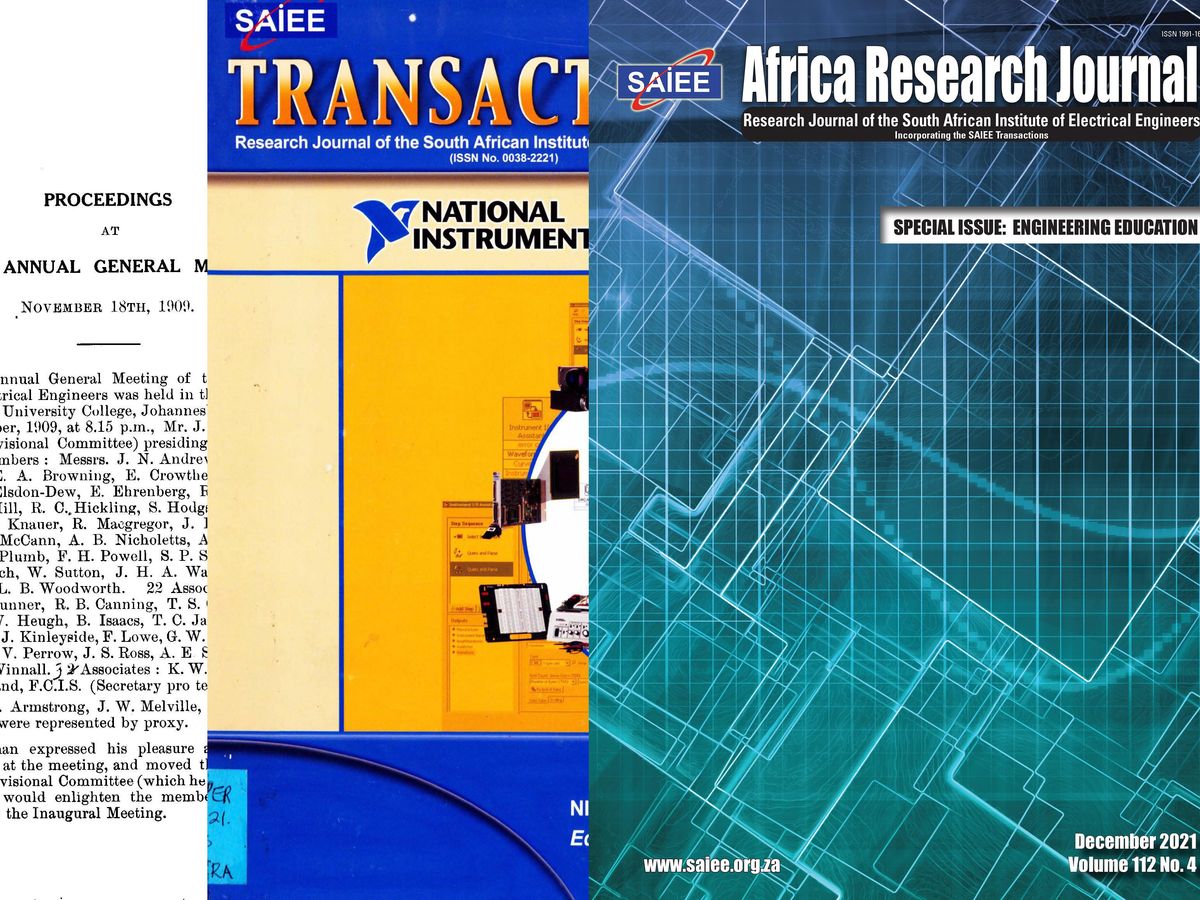The full archives of the SAIEEAfrica Research Journal—some issues dating back more than 100 years—are now available in the IEEE Xplore Digital Library.
The open-access quarterly journal from the South African Institute of Electrical Engineers publishes peer-reviewed articles on research in IEEE’s fields of interest. The digitization of the 5,000 articles—dating between 1909, when the publication launched, and 2008—took almost eight years to complete. The archive is in addition to articles from 2009 onward that were added to IEEE Xplore in 2018.
“Prior to 2005, the journal was published in print. This was therefore a big project,” says IEEE Fellow Saurabh Sinha, the journal’s managing editor. “From the digitized articles, using optical character recognition, search features were enabled—which is amazing.”
Sinha, a former vice president of IEEE Educational Activities and a former IEEE Board of Directors member, is one of the IEEE volunteers who led the effort. He is a professor and a deputy vice chancellor for research and internationalization at the University of Johannesburg.
The digital library now houses the journal’s entire collection. The majority of the authors are from Africa. In collaboration with the IEEE Africa Council, special issues focus on areas such as East Africa.
The SAIEEAfrica Research Journal is one of the oldest electrical engineering journals, Sinha says. It originally was called Transactions of the SAIEE and was renamed when the journal went digital in 2005.
The Transactions of AIEE from the American Institute of Electrical Engineers, one of IEEE’s predecessor societies, is the oldest such journal. It began publishing in 1884.
With the SAIEE Africa Research Journal on IEEE Xplore, millions of engineers, researchers, and students around the world are able to discover and read about the research activities in the journal, notes Naveen Maddali, senior product manager for planning and implementation for IEEE Global Products and Marketing.
“SAIEE’s exposure to a global audience is increased, while IEEE is able to provide additional valuable research content to the users of IEEE Xplore,” Maddali says.
LONG-STANDING TIES
The relationship between IEEE and SAIEE goes back to 1995, when the two organizations signed an IEEE National Society Agreement. They committed to working together to “enhance the professional and personal growth” of the region’s engineers “and related fields of interest.” They do so by elevating technical skills, enhancing the image of the profession, encouraging professional growth, and developing networking opportunities.
Sinha says the agreement has engendered a collegial relationship between the two organizations over the years.
“SAIEE’s exposure to a global audience is increased, while IEEE is able to provide additional valuable research content to the users of IEEE Xplore.”
“I think it really is a renewed relationship through this journal between the SAIEE and IEEE,” he says, “which will bring about value for both organizations in the future.”
TEAMWORK
Sinha credits IEEE staff members from several organizational units for the success of the archive project.
“I’ve been a volunteer now for more than 20 years, and I think the support of the staff was quite phenomenal,” he says. “Just imagine the magnitude of the project. Through this collaboration, the SAIEE Africa Research Journal was able to extend its reach and exposure. I think the power of IEEE Xplore really pulls in SAIEE’s fields of interest.”
FUNDING SOURCES
Finding funding for the project was made possible by the IEEE Foundation and the IEEE Africa Council, which is a sponsor of the journal. The cost of hosting such a large archive would ordinarily be too expensive, but the SAIEE and key IEEE volunteers worked with IEEE and the IEEE Foundation to find the money, Sinha says.
They were able to use existing funds that were donated to the AIEE in the early 1900s. Because of the limitations placed on how money from the funds could be used, IEEE sought and received permission in 2013 to modify the use of the funds to be able to support projects, like this one, that add scholarly content from a non-U.S. publisher to the digital library, according to the IEEE Foundation’s executive director Karen Galuchi.
- Powered By IEEE Program Saves Startups Money - IEEE Spectrum ›
- Free Access to Thousands of COVID-19 Research Documents ... ›
- Prominent Universities Sign Open Access Agreements with IEEE - IEEE Spectrum ›
- IEEE Xplore Adds Ericsson Technology Review to its Collection - IEEE Spectrum ›
Kathy Pretz is editor in chief for The Institute, which covers all aspects of IEEE, its members, and the technology they're involved in. She has a bachelor's degree in applied communication from Rider University, in Lawrenceville, N.J., and holds a master's degree in corporate and public communication from Monmouth University, in West Long Branch, N.J.



